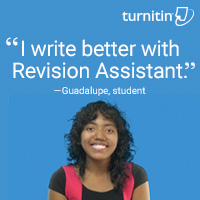Disrupting Class: How Disruptive Innovation Will Change the Way the World Learns
My rating: 4 of 5 stars
Clayton Christensen offers a believable and intuitive approach to fixing our staggering American educational system. In a nutshell: people learn in different ways (no surprise here; it’s a well-documented theory). Teachers too often teach one way (or two or three–the point being, teachers standardize. I understand. I’ve been a teacher most of my life. One of us and many of them in a classroom). His solution: Use 21st century technology and Web 2.0 to individualize lessons to suit needs.
That’s where the problem starts according to Christensen. Schools throw technology at their problems in hopes software, hardware, internet websites, will fix their shrinking test scores. Every technology teacher I know agrees with the author that this approach is flawed and frustrates both students and teachers. Technology is a tool, to be wielded with a skilled hand.
Christensen gives teachers permission to disrupt class–shake it up! See what’s going on. Here are some of my favorite ideas:
- If the addition of computers to classrooms were a cure, there would be evidence of it by now. There is not. Test scores have barely budged.
- Why haven’t schools (with so much emphasis on technology) been able to march down this path (of student-centric learning)? …because they have crammed the new technologies into their existing structure…
- The world of education is one in which there is little agreement on what the goals are, let alone the methods that are best-suited to achieve them.
- Public schools have been improving steadily, since 1900, but society moved the goal posts …changed the definition of improvement…
Here are some of the great quotes from this book:
- If the addition of computers to classrooms were a cure, there would be evidence of it by now. There is not. Test scores have barely budged.
- There has to be a better explanation than simply blaming students
- So if too little money, too few computers, uninterested or unprepared students, parents, a broken teaching paradigm, and strong unions individually are not the root cause of the US public schools’ struggles, might it be that they all are conspiring collectively to constrain the US? Of course but all … are at work in other nations’ schools as well… and many of them obtain better results…
- Every student learns in a different way
- Disruption is a positive force
- Why haven’t schools (with so much emphasis on technology) been able to march down this path (of student-centric learning)? …because they have crammed the new technologies into their existing structure…
- the world of education is one in which there is little agreement on what the goals are, let alone the methods best-suited to achieve them.
- While most people have some capacity in each of the eight intelligences (linguistic, logical-mathematical, spatial, bodily-kinesthetic, musical, interpersonal, intrapersonal, naturalist), most people excel in only two or three of them
- If public schools are improving steadily (which Christensen explains they have been, since 1900), then how did we get to today’s environment where there is constant worry and complaint? …society moved the goal posts. …society changed the definition of improvement…
- …the way schools have employed computers has been perfectly predictable, perfectly logical–and perfectly wrong. If school admin will implement computer-based learning for courses where there are no teachers, then computer-based learning will… impact the instructional job that teachers are doing in a positive way
- teachers have implemented computers in the most common-sense way–to sustain their existing practices and pedagogies rather than to displace them.
How many of you are familiar with student-centric teaching methods such as Virtual Labs (i.e., Second Life educational options) and robots teaching a foreign language?
Anyone else familiar with this book? What are your take-aways from it?
Jacqui Murray has been teaching K-18 technology for 30 years. She is the editor/author of over a hundred tech ed resources including a K-12 technology curriculum, K-8 keyboard curriculum, K-8 Digital Citizenship curriculum. She is an adjunct professor in tech ed, Master Teacher, webmaster for four blogs, an Amazon Vine Voice, CSTA presentation reviewer, freelance journalist on tech ed topics, contributor to NEA Today, and author of the tech thrillers, To Hunt a Sub and Twenty-four Days. You can find her resources at Structured Learning.





































1 thought on “You Have Permission to Disrupt Class”
Comments are closed.